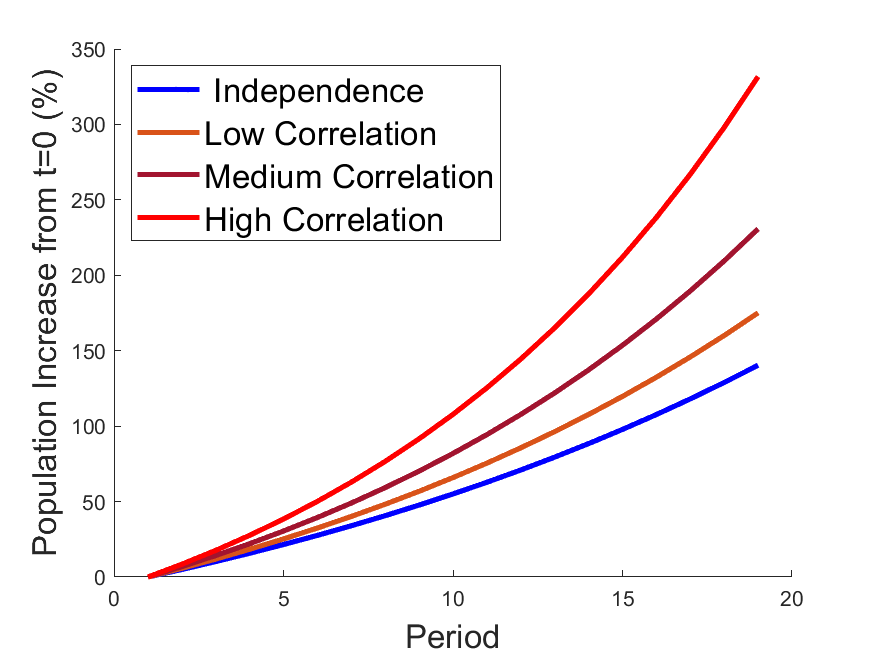Abstract I demonstrate that common results from the literature of discrete choice modeling based on the Gumbel (extreme value type I) distribution can be extended to the Fréchet (extreme value type II) and Weibull (extreme value type III) distributions. I focus on choice models based on multivariate distributions allowing for dependence between structural errors. Here, we generalize existing results to accommodate even more flexible correlation patterns and multivariate distributions. Examples of explicit choice models to be employed in economic modeling are provided. Finally, we demonstrate how to flexible derive correlated choice models and provide closed form solutions for quantities of interest important for welfare analysis.
Toy Model Exercise
Canonical spatial model a la Helpman (1998), as reviewed in Redding and Rossi-Hansberg (2017) - boiled down to the absolute necessities. Consider picking a random location and increasing productivity each period. How does the labor force response depend on how (much) idiosyncratic shocks are correlated?
